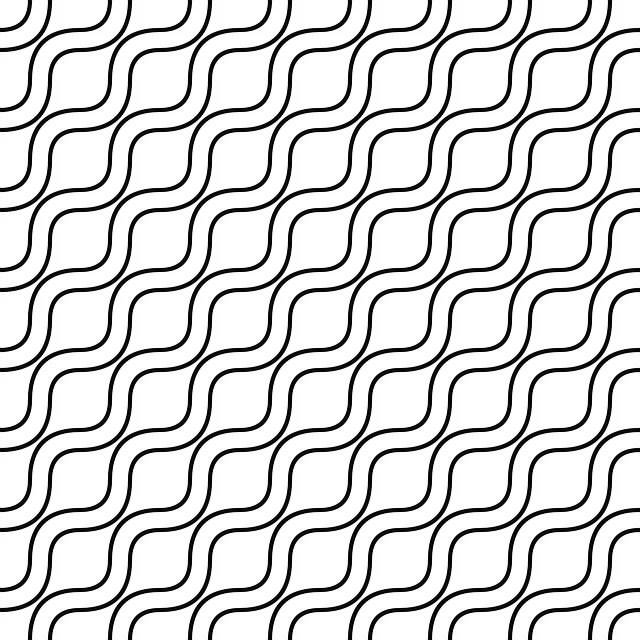Delayed onset muscle soreness (DOMS) can be alleviated through herbal remedies like kava and kratom, each offering unique benefits. Kava's calming effects reduce stress and tension, while kratom interacts with opioid receptors for pain relief. The choice between them depends on personal preference; kava soothes without drowsiness, while kratom provides energy boosts or pain relief. Personalized workout routines consider individual needs, including incorporating these herbs for euphoria or recovery. Contrast therapy, heat, sleep, and stress management also aid recovery. Consulting a healthcare professional is crucial before using any supplements. For long-term fitness goals, evidence-based remedies like vitamin C, magnesium, and protein powders are recommended over kava or kratom for temporary relief.
Feeling achy after a workout? Muscle soreness can be a barrier to continued exercise. Luckily, there are natural solutions like Kava and Kratom that offer pain relief and promote relaxation. This article delves into the science behind muscle soreness, exploring how these herbal supplements stack up in terms of effectiveness for euphoria and relaxation—Kava vs. Kratom. We also provide tailored workout routines and tips for personalized recovery strategies to enhance your fitness journey.
- Understanding Muscle Soreness and Its Causes
- The Role of Kava and Kratom in Relieving Pain
- Comparing Kava vs. Kratom for Euphoria and Relaxation
- Creating Personalized Workout Routines for Different Needs
- Incorporating Herbal Supplements into Your Exercise Plan
- Tips for Effective Recovery and Long-Term Wellness
Understanding Muscle Soreness and Its Causes

Muscle soreness is a common post-workout experience, often described as delayed onset muscle soreness (DOMS), typically peaking around 24 to 72 hours after exercise. It’s a sign that your muscles are adapting and growing stronger, but it can be uncomfortable and debilitating for some. Understanding the causes of this soreness is key to managing and alleviating its effects.
Intense or unfamiliar exercises, especially those involving eccentric contractions (lengthening muscles while under tension), can trigger micro-tears in muscle fibers. These tiny tears lead to inflammation and subsequent pain. Kava and kratom, two herbal remedies known for their calming and euphoric properties, have been studied for their potential anti-inflammatory effects. While kava is renowned for its relaxing qualities, kratom offers a unique combination of analgesic (pain-relieving) and stimulant properties, which might provide some relief from muscle soreness in addition to promoting relaxation.
The Role of Kava and Kratom in Relieving Pain

Kava and Kratom, two distinct natural compounds, have gained attention in the realm of pain management and muscle soreness relief. While both offer potential benefits, they act differently in the body, which can influence user experiences. Kava, often celebrated for its calming properties, has been traditionally used to alleviate stress and anxiety. Contemporary research suggests its effectiveness in reducing muscle tension and promoting relaxation, thereby offering a natural remedy for pain associated with soreness. On the other hand, Kratom, known for its analgesic (pain-relieving) qualities, interacts with opioid receptors in the brain, providing an alternative approach to managing acute and chronic pain without the addictive potential often associated with prescription opioids.
In terms of euphoria, Kava vs Kratom present contrasting profiles. Kava’s soothing effects can induce a sense of contentment and relaxation, while Kratom’s active compounds may trigger feelings of euphoria in certain individuals, particularly when used at higher doses. However, the euphoric state associated with Kratom is not universally experienced and can be influenced by individual tolerance and metabolism. Understanding these differences is crucial when considering these herbs as alternatives for muscle soreness relief, ensuring a tailored approach to wellness that aligns with personal preferences and specific pain management needs.
Comparing Kava vs. Kratom for Euphoria and Relaxation

Kava and Kratom are both natural herbs known for their calming and relaxing properties, often sought after for relief from muscle soreness and stress. While they share some similarities, there are distinct differences between Kava vs. Kratom for euphoria and relaxation.
Kava, derived from the root of a plant in the pepper family, has been traditionally used in the Pacific Islands for its sedative effects. It’s known to induce feelings of calmness and well-being without causing drowsiness. Kava works on the nervous system, slowing down nerve impulses and reducing anxiety. On the other hand, Kratom, derived from the leaves of the Mitragyna speciosa plant, offers a more complex profile. It can provide both energizing and sedating effects, depending on the strain and dosage. Kratom’s euphoric properties are attributed to its interaction with opioid receptors, similar to opioids but without the same level of risk for addiction. Comparing Kava vs. Kratom, while Kava is generally gentler and more targeted at relaxation, Kratom offers a broader range of effects, including pain relief, energy boost, and mood enhancement. The choice between them ultimately depends on an individual’s specific needs and preferences for their relaxation and euphoria journey.
Creating Personalized Workout Routines for Different Needs

Creating personalized workout routines tailored to specific needs is a powerful tool in managing muscle soreness and enhancing overall well-being. Unlike one-size-fits-all approaches, these plans acknowledge that every individual has unique physical attributes, fitness levels, and recovery requirements. For instance, those seeking euphoria might turn to natural compounds like kava and kratom, known for their soothing and energizing effects.
When designing a routine, consider factors such as age, occupation, medical history, and lifestyle. A balanced regimen could incorporate strength training, flexibility exercises, and active recovery days. For instance, a desk worker experiencing chronic neck tension might benefit from yoga and stretching, while an athlete recovering from intense competition could use lighter cardio and targeted muscle release techniques. This personalized approach ensures optimal results, reduces the risk of injury, and promotes sustainable fitness habits.
Incorporating Herbal Supplements into Your Exercise Plan

Herbal supplements have gained popularity among fitness enthusiasts as natural ways to aid recovery and alleviate muscle soreness. When incorporating these into your exercise plan, it’s essential to understand their benefits and potential effects. Kava and Kratom are two herbs often discussed for their soothing properties. Kava is renowned for its calming effect, reducing stress and promoting relaxation, which can be beneficial after intense workouts. On the other hand, Kratom is known for its euphoric sensations and pain-relieving properties, offering a natural alternative to manage post-workout discomfort.
The choice between Kava and Kratom depends on individual preferences and desired outcomes. While both herbs have their advantages, it’s crucial to consult with a healthcare professional before adding any supplements to your routine, especially if you’re new to herbal remedies or have specific health concerns. They can guide you on the appropriate dosage and potential interactions, ensuring a safe and effective recovery strategy.
Tips for Effective Recovery and Long-Term Wellness

To aid in muscle recovery and prevent long-term discomfort, incorporating specific strategies into your post-workout routine is essential. One effective approach involves contrasting warm and cold therapies. Applying ice packs or taking a cold bath can reduce inflammation and alleviate acute soreness. Conversely, post-exercise heat therapy, such as hot showers or foam rolling with heated tools, enhances blood circulation, loosens tight muscles, and promotes the healing process.
For overall wellness, focusing on both physical and mental restoration is key. Adequate sleep allows your body to repair and rebuild muscle tissue. Additionally, managing stress levels through relaxation techniques like meditation or yoga can prevent chronic inflammation. When considering supplements, while Kava and Kratom may offer temporary euphoric effects, they are not optimized for recovery. Instead, opt for evidence-based remedies like vitamin C, magnesium, and protein powders tailored to support muscle repair and long-term fitness goals.
Customized workout plans, incorporating herbal supplements like Kava and Kratom, offer a holistic approach to muscle soreness relief and enhancing post-exercise well-being. Understanding the unique benefits of each herb—Kava’s calming effects and Kratom’s pain-relieving properties—enables personalized routines tailored to individual needs. Whether prioritizing relaxation (kava vs kratom for euphoria) or active recovery, these strategies ensure effective short-term relief while fostering long-term wellness. By integrating evidence-based practices into your fitness journey, you can optimize your workouts and embrace a happier, healthier life.






